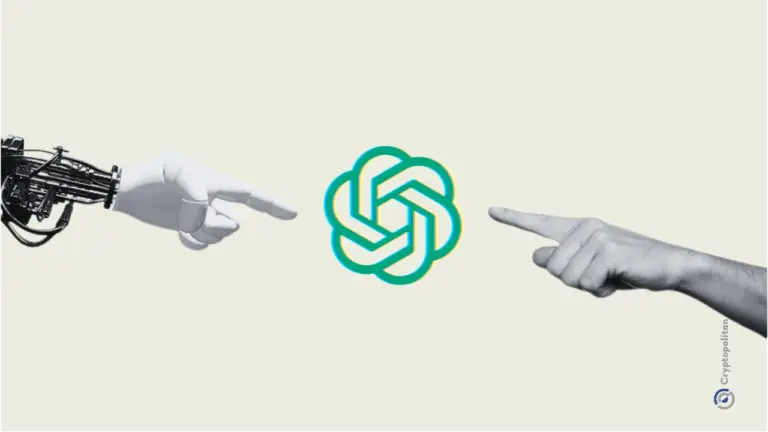No, the EU is not banning self-custodial crypto transactions or wallets
Quick Take Incorrect reports that the EU is set to ban anonymous crypto wallets and self-custodial payments went viral over the weekend. It followed a misinterpretation of comments from a member of the European Parliament, confirming committee approval of the new EU Anti Money Laundering Regulation (AMLR). However, the reports were swiftly debunked, with Circle’s EU Strategy and Policy Director Patrick Hansen confirming there was no such ban.
The crypto community erupted into panic over the weekend amid incorrect reports that the EU was banning anonymous crypto wallets and self-custodial payments.
The reports seemingly misinterpreted comments from Patrick Breyer, a member of the European Parliament, on Thursday, confirming its economic and monetary policy committee's approval of the new EU Anti Money Laundering Regulation (AMLR) and its final text .
The misinformation went viral , warning that “payments to self-custody bitcoin and crypto wallets are now illegal.” However, others were quick to respond to the overreaction. “This needs to be taken seriously but, as always, it's crucial to read the text of the actual legislation. TLDR self-custody is not illegal,” Freddie New, Head of Policy at Bitcoin Policy UK, said .
“Fake news isn't it? I read the article and it says if you're hosting wallets for other people they need KYC (which is the same in America),” crypto influencer Jordan Fish, aka Cobie, added . “Seems maybe they're also ‘banning’ you sending from a CEX to self-hosted without identifying who it is. But since self-custody to self-custody is unaffected, and self-custody still allowed, just withdraw from CEX to your own self-custody?”
Circle’s EU Strategy and Policy Director Patrick Hansen also moved to swiftly debunk the reports. “Self custody wallets are not banned. Payments to/from self custody wallets are not banned. P2P transfers are explicitly excluded from AMLR, as are self custody software and hardware wallets,” he said. “However, paying with crypto (for example to merchants) with a non KYC’d self custody wallet will be more difficult/banned depending on the merchants set up. This change, as well as the lower thresholds for anonymous cash payments, has unfortunately been agreed months ago,” he added.
So, what does the AMLR actually mean for crypto in the EU?
Hansen explained that the AMLR is not a crypto regulation — it is a broad anti-money laundering/counter-terrorist financing framework that applies to institutions classified as “obliged entities” or “OEs.” These include all financial institutions, as well as the so-called “CASPs” (crypto-asset service providers), but also other institutions like gambling services that could be prone to AML/CFT risk.
However, the AMLR explicitly excludes providers of hardware and software, like Ledger, as well as self-custody wallets, like MetaMask, that do not have access to or control over users’ crypto assets.
All CASPs, such as centralized crypto exchanges and custodial wallet providers regulated under markets in Crypto-Assets legislation (MiCA), will need to follow standard KYC/AML procedures like customer due diligence. Yet they are already subject to these obligations under current AMLD5 legislation, Hansen explained.
MiCA is a regulatory framework proposed by the European Union to govern digital assets and their markets that came into force in June 2023 and will be fully applicable from Dec. 30, 2024.
“The AMLR (Art. 58) now explicitly prohibits CASPs to provide anonymous accounts, meaning a custodial crypto business cannot provide services for anonymous users. This is already prohibited under existing AML rules anyway, so nothing new,” Hansen said. However, others warned , this could impact non-KYC custodial Bitcoin Lightning wallets like Wallet of Satoshi.
Additionally, CASPs will not be able to provide accounts for privacy coins, though such practice is already widespread, and MiCA already prohibits crypto assets with built-in anonymization.
As for transfers between CASPs and self-custody wallets, AMLR requires “risk-mitigating” measures, Hansen continued, including blockchain analytics or collecting additional data about their origin or destination. It brings the transactions in line with the Transfer of Funds Regulation (TFR), the EU's implementation of the FATF (Financial Action Task Force) travel rule, but this is nothing new either, Hansen added.
Regarding merchant payments, AMLR also limits cash payments to €10,000 ($10,830). There are no restrictions on using self-custodial wallets for buying goods or services in the EU. However, should customers want to use a CASP such as BitPay to buy goods or services with crypto, the CASP will need to verify users’ identity and implement additional KYC/AML measures if the transaction (single or combined) is worth more than €1,000 ($1,083).
Not fully enforced for three years and it could have been worse
“The AMLR is not a ban of self-custody payments, self-custody wallets or P2P transfers," Hansen concluded. “It mostly reiterates AML/CFT rules for CASPs and other OEs, but for the most part, these rules were already mandatory and common business practice anyway (from AMLD5, MiCA, TFR).”
It also could have been worse, with Hansen describing the final version as a “great outcome” for the crypto industry. “Previous versions of the proposed AMLR proposed a way stricter approach that would have meant a KYC on the self-custody originator/beneficiary, but also thanks to industry efforts a risk-based approach with various options was finally agreed on.”
Parliament proposed limiting merchant payments from a self-custody wallet to €1,000, which was removed from the final version. It also previously proposed including DAOs, DeFi, NFT platforms and even developers under AMLR’s scope, Hansen said, arguing the impact from the legislation would now be “extremely limited.”
The approved AMLR text only needs to pass final, purely formal, approval in the European Parliament, likely at the end of April, and in the Council of the EU. It would then enter application three years after publication, around summer 2027, according to Hansen.
EU markets watchdog moves closer to finalizing rules under MiCA
The European Securities and Markets Authority (ESMA) advanced its efforts to implement the Markets in Crypto Assets regulation by publishing its first report and launching a third consultation on Monday.
The report outlines draft requirements for firms seeking authorization under MiCA, aiming to standardize the regulatory landscape for crypto assets within the EU. Additionally, the ESMA seeks feedback on rules to combat market abuse and ensure proper service delivery in the crypto sector, with the MiCA framework set to be fully enforced by December.
Disclaimer: The content of this article solely reflects the author's opinion and does not represent the platform in any capacity. This article is not intended to serve as a reference for making investment decisions.
You may also like
Trump turns on ‘buddy’ Putin over Ukraine, says he’ll slap Russia with sanctions now
Share link:In this post: Trump warned he may hit Russia with new sanctions after fresh missile attacks on civilians. Trump met with Zelenskyy in Rome and called the meeting productive, but gave no full details. Trump offered a peace deal that includes recognizing Crimea as Russian territory, which Zelenskyy rejected.
Trump’s economic and geopolitical failures took center stage at Pope Francis’ funeral
Share link:In this post: Trump’s economic and diplomatic tensions took over the spotlight at Pope Francis’ funeral. Trump met briefly with Zelenskyy, Macron, and Starmer during the service but made little progress. Trump skipped a second meeting with Zelenskyy and left Rome quickly after the Mass.

Elon Musk and Nobel laureates call for investigation into OpenAI’s nonprofit mission
Share link:In this post: Elon Musk called OpenAI restructuring plan the “scam of the century” after experts oppose it. Legal and AI experts have called on Attorneys General of Delaware and California to OpenAI core mission as a non-profit. Concerns about Open AI deviating from its non-profit origins is not limited to Musk.

Republicans propose shutting down US audit regulator PCAOB
Share link:In this post: Republicans plan to scrap the Public Company Accounting Oversight Board (PCAOB). The agency’s responsibilities could be pushed to the SEC if the lawmakers succeed in shutting it down. Republicans also want to pass a major tax bill that could change the non-profit sector.

